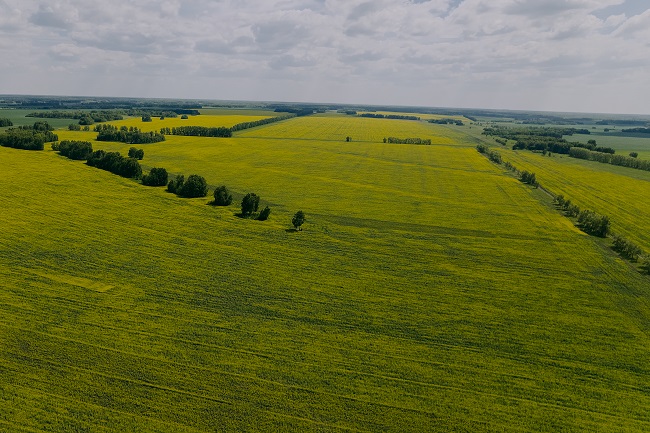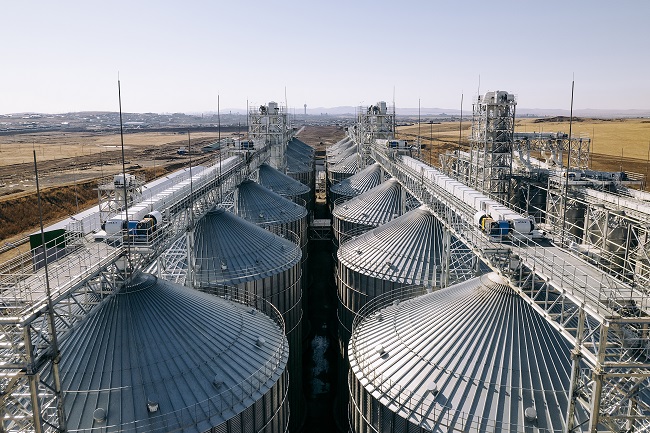China-Russia grain corridor facilitates multilateral cooperation in food security
The "New Land Grain Corridor", which was launched in 2016 as a project proposed by Russian President Vladimir Putin and supported by the Chinese leadership, aimed to establish the world's first specialized railway grain terminal. It serves as the foundation for the China-Russia grain corridor, aiming to enhance the food security of both countries, facilitate trade and economic cooperation, and has now developed into a large-scale program and practical implementation of win-win cooperation.
The name of the program – New Land Grain Corridor – was appeared back in 2012 in China at the presentation of the project idea of the National Development and Reform Commission.
Today, the Land Grain Corridor applies the "contract farming" model in the Urals, Siberia and the Far East. It covers an area of over 32 million hectares with a production potential of 30 million tons per year by 2025, 60 million tons by 2030 and 90 million tons by 2035, of which, over 70 million tons shall be supplied to friendly countries. Under this circumstance, Russia's total supply capacity of grains to friendly countries is expected to reach 120 million tons per year.

Grain production potential by 2035 - 90 million tons
The "contract farming" instrument relies on long-term agreements with farmers, under which only products required by the market are manufactured. Contracts are concluded on the basis of a scientifically sound and careful attitude towards the land and the environment. A total of 50 percent of advance payments of the annual supply cost is conducted, and the pricing is based on a fair formula. It also provides full agricultural support, including through the use of IT and remote sensing systems and the "Agricultural Assistant" digital platform.
Moreover, the infrastructure of the Land Grain Corridor involves hub elevators being constructed along the main railway lines for the accumulation of grain and uniform year-round supplies. Cross-border grain and multimodal terminals create full-scale logistics hubs for the loading and supply of grain in one direction, as well as the delivery of various goods from China in the opposite direction.
This creates an economically unique "Grain +" logistics due to the fact that railway transport has no empty hours, trains go loaded in both directions. On the Russian-Chinese border alone two facilities will operate according to this model: the Grain Terminal Zabaikalsk with a capacity of up to 8 million tons per year and more than 6 million tons of return cargo per year, and a terminal near the Nizhneleninskoye - Tongjiang bridge crossing, designed in cooperation with the Chinese State-owned corporation China Chengtong. Similar Hubs are planned on the border of the Islamic Republic of Iran and the Republic of Turkmenistan, and other regions.
Operation of the "Grain +" logistics model required the Russian-Chinese development and manufacture of a new type of rolling stock - special "grain containers". They laid the foundation for the "Land Grain Fleet" of Russia and China, capable of transporting up to 600,000 tons at a time (or 8 million tons of grain and about 6 million tons of cargo per year) at the first stage, and up to 3 million tons (or 39 million tons of grain and about 29 million tons of cargo per year). This will make it possible to almost double the effective goods turnover across the border and transportation along the Trans-Siberian Railway due to the absence of "air transportation" in one direction.
The next step in the Land Grain Corridor program development is the signing of an Intergovernmental Agreement between Russia and China to indicate legal support by the two countries. Today, this work is already underway.

Grain Terminal Zabaikalsk
Together with Chinese partners, China's logistics and provision of return load have been developed. The portfolio of long-term (until 2035) contracts for the production of additional volumes of grain and supply already amounts to almost 150 million tons.
As the problem of food security concerns not only Russia and China, but almost all of Russia's neighboring countries, Russia has been planning the expansion of the successful cooperation within the framework of the Land Grain Corridors program from a bilateral Russian-Chinese format to a multilateral one.
Another large and equally important project, the Affordable Drinking Water for the Population of BRICS Countries, has moved from the design stage to construction. This project is being jointly implemented by Russian and Chinese companies, aiming to construct highly efficient water extraction facilities and provide high-quality and affordable products in Siberia and the Far East, where half of Russia's renewable underground freshwater sources are concentrated (about 500,000,000 m3 per day out of almost 1,000,000,000 m3 per day), and have no analogues, highly efficient (96 thousand bottles per hour) water extraction factories, its preparation, bottling, management of logistics and supply of high-quality, but affordable (due to unique logistics and high-performance technologies) products.
Due to pollution and climate change, in accordance with UN data, by 2035, half of the world's population will face a shortage of drinking water, with 36 countries are already suffering from water shortages.
Additionally, according to the UN, by 2035 the population of the BRICS countries will reach: without expansion - 3.4 billion people, with expansion - 5.09 billion people, or 57% of the planet's population.
Practical experience gained during the implementation of the New Land Grain Corridor program, namely, the calculation and development of a "food raw materials balance" according to key food/raw materials nomenclature, is unique and can serve as a foundation for replication.
The idea of creating a Food Security Belt will become an opportunity to unite many countries. Competition between countries is necessary for the sake of progress, but it should not spread to competition for access to vital resources and technologies, such as food, water or medicine.
The multipolar world emerging in conditions of climate change, global economic and geopolitical cataclysms needs a cause uniting countries and peoples and a positive example of cooperation, which could be the establishment of a Food Security Belt!








